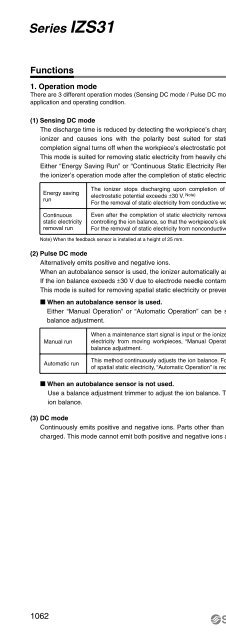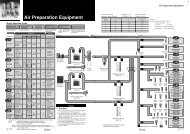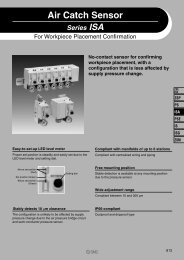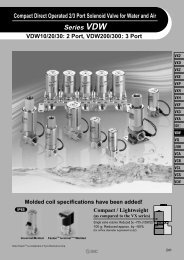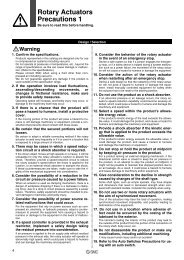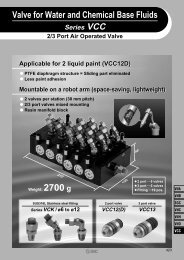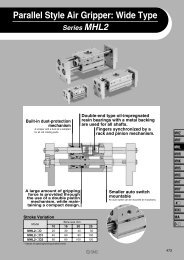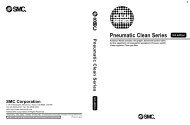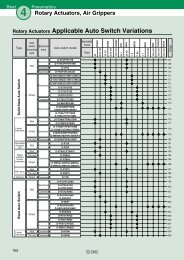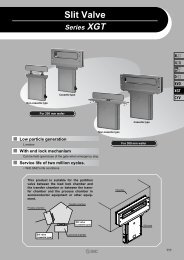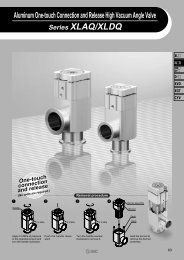Series IZS31
Series IZS31
Series IZS31
- No tags were found...
You also want an ePaper? Increase the reach of your titles
YUMPU automatically turns print PDFs into web optimized ePapers that Google loves.
<strong>Series</strong> <strong>IZS31</strong>Functions1. Operation modeThere are 3 different operation modes (Sensing DC mode / Pulse DC mode / DC mode) for the <strong>IZS31</strong>, which can be selected based on theapplication and operating condition.(1) Sensing DC modeThe discharge time is reduced by detecting the workpiece’s charge condition with a feedback sensor which feeds the data back to theionizer and causes ions with the polarity best suited for static electricity removal being emitted. The static electricity removalcompletion signal turns off when the workpiece’s electrostatic potential falls within ±30 V. Note)This mode is suited for removing static electricity from heavily charged workpieces.Either “Energy Saving Run” or “Continuous Static Electricity Removal Run” can be selected as the operation method depending onthe ionizer’s operation mode after the completion of static electricity removal.Energy savingrunContinuousstatic electricityremoval runThe ionizer stops discharging upon completion of static electricity removal. It resumes discharging when the workpiece’selectrostatic potential exceeds ±30 V. Note)For the removal of static electricity from conductive workpieces, “Energy Saving Run” is recommended.Even after the completion of static electricity removal, this method continues to remove static electricity using DC pulses whilecontrolling the ion balance, so that the workpiece’s electrostatic potential falls within ±30 V.For the removal of static electricity from nonconductive workpieces, “Continuous Static Electricity Removal Run” is recommended.Note) When the feedback sensor is installed at a height of 25 mm.(2) Pulse DC modeAlternatively emits positive and negative ions.When an autobalance sensor is used, the ionizer automatically adjusts the ion balance to within ±30 V.If the ion balance exceeds ±30 V due to electrode needle contamination, the ionizer outputs a maintenance output signal.This mode is suited for removing spatial static electricity or preventing workpieces from becoming electrostatically charged. When an autobalance sensor is used.Either “Manual Operation” or “Automatic Operation” can be selected as the operation method depending on the method of ionbalance adjustment.Manual runAutomatic runWhen a maintenance start signal is input or the ionizer is turned on, this method adjusts the ion balance. For the removal of staticelectricity from moving workpieces, “Manual Operation” is recommended. Start system operation after the completion of ionbalance adjustment.This method continuously adjusts the ion balance. For the removal of static electricity from stationary workpieces or the removalof spatial static electricity, “Automatic Operation” is recommended. When an autobalance sensor is not used.Use a balance adjustment trimmer to adjust the ion balance. This requires the separate use of a measuring instrument to verify theion balance.(3) DC modeContinuously emits positive and negative ions. Parts other than the object need to be appropriately grounded to prevent from beingcharged. This mode cannot emit both positive and negative ions at the same time.1062


